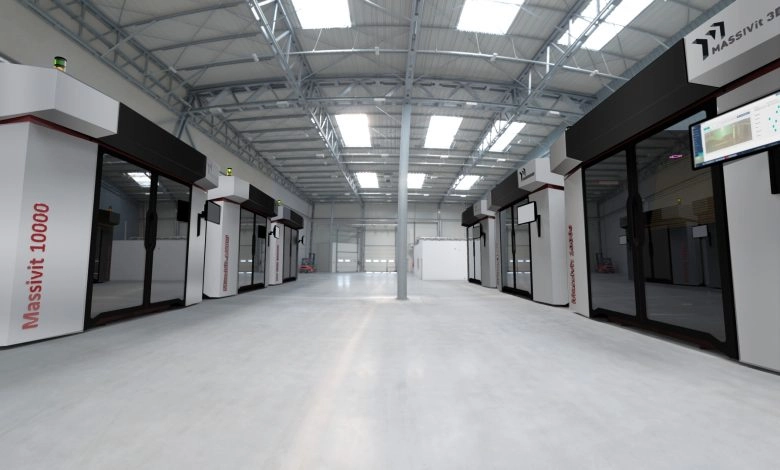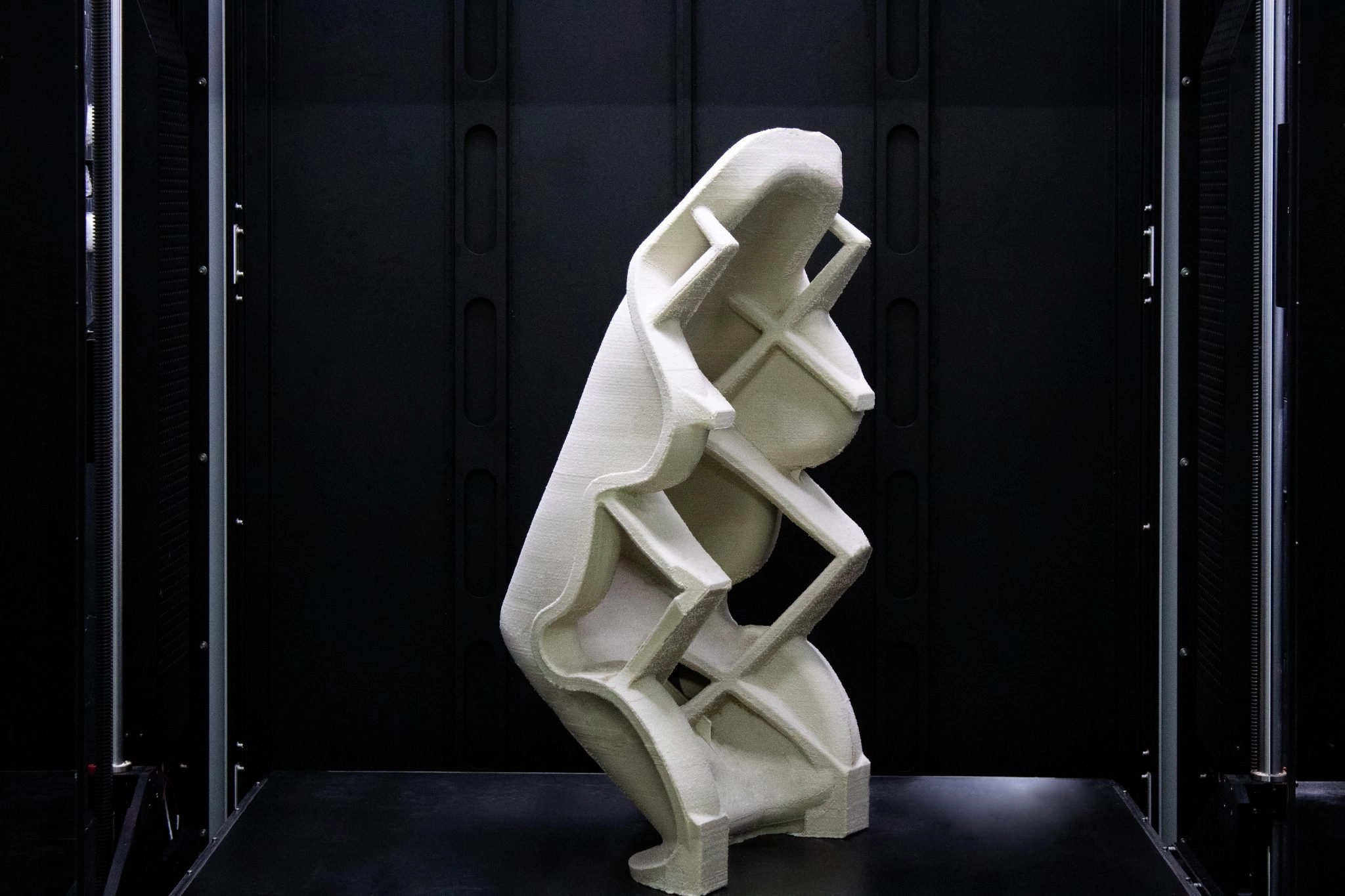Massivit 3D’s in-depth knowledge of large-scale additive manufacturing has evolved over the years. Many, for instance, will know of how its 3D printers are used to produce large-scale objects—including the DB Project full-scale concept car—for marketing and entertainment purposes. But its technology is also capable of much more. Its newest machine, the Massivit 10000, is built for tooling applications in the automotive, railway, marine, energy and other industries. More specifically, the Massivit 10000 seeks to reinvent how large-scale fiber-reinforced composite parts are fabricated.

The market for FRPs
Fiber-reinforced plastics (FRPs) are made up of a plastic matrix and reinforcing fibers, such as glass and carbon fibers. These additives, which can be tuned through fiber length and alignment, enhance the properties of the plastic matrix, increasing strength, durability and resistance. FRP composites are also lightweight and have relatively low raw material costs, making them more advantageous than metals in many cases. Due to all these factors, fiber-reinforced plastics are of interest for many applications across the automotive, railway, energy, maritime and construction industries, among others.
Despite the material group’s benefits, however, FRP composite implementation has faced a bottleneck in large part due to the cost and complexity of mold production. That is, traditional FRP tooling processes are incredibly labor and time intensive, requiring many steps before a mold is made, which inevitably generates higher costs.
The Massivit 10000, based on the Israeli company’s Cast-In-Motion (CIM) technology, offers an alternative for producing molds for large-scale FRP components. The hybrid AM system has the ability to produce composite molds up to 80% faster than conventional tooling methods (we’re talking from weeks to days) and with drastically less manual labor (as much as 90%). The process is also pragmatic: manufacturers can continue to use many of their current processes, materials and best practices for molding FRPs, while leveraging the Massivit 10000 to improve and streamline existing workflows.
A hybrid approach
The Massivit 10000 actually relies on a combination of processes: the company’s patented Gel Dispensing Technology (GDP) and Cast-In-Motion (CIM). The techniques are applied using a dispensing print head and a casting head, respectively. The GDP print head is used to produce a tool pattern using a sacrificial, UV-curable gel. The mold itself is simultaneously cast using the CIM casting head and a thermoset engineering resin. Today, Massivit 3D is using epoxy as the casting material, though it plans to open up more casting material options in the near future.
This dual approach results in the creation of a temporary double-layer shell with the resin pattern inside. The pattern and shell are then immersed in water to remove the sacrificial outer layers, leaving the resin mold to be cured in an oven. The mold, which can also undergo necessary sanding and polishing, is then ready to use with FRP composite layups.
The hybrid Massivit 10000 is also, well, massive. With a build volume of up to 1.2 x 1.5 x 1.65 meters, the composite tooling system is suitable for a wide range of applications, including producing large-scale molds for racing car seats and catamaran hydrofoils, as well as smaller molds for protective antenna housings and more. One of the system’s key benefits? It can reduce tooling costs by up to 50% by drastically streamlining the production process.
Manufacturing on Demand
A true game-changer
In addition to the cost and time benefit, Massivit 3D’s Cast-In-Motion process is more sustainable than conventional composite tooling, largely because it minimizes material waste at several stages. On a base level, the hybrid 3D printing and casting technique eliminates the need for a master by directly printing the mold, which significantly reduces material consumption.
“The Massivit 10000 creates two 3D printed outer walls using a specified wall thickness required for the specific geometry of the mold,” the company adds. “By nature, this reduces waste associated with CNC (subtractive) technology. And, unlike other AM technologies, it requires practically no support structures.” Using precision geometries for the outer walls also leads to faster oven curing times for the mold.
Ultimately, Massivit 3D’s new system aims to disrupt FRP tooling. While many AM processes are understood as manufacturing methods that complement existing production techniques, Massivit believes its Cast-In-Motion process has the potential to actually become the next conventional FRP molding approach.
“The contracted production time facilitated by this new digital AM technology promises to transform manufacturing as we know it by removing the recognized bottleneck of the traditional FRP tooling stage,” the company explains. “Other than the inevitable challenges of introducing change and advancements to replace antiquated manufacturing methods and necessitating shifts in job responsibilities, it’s unlikely that traditional methods would prevail once manufacturers are exposed to the time and cost benefits available with this technology.”
Not only that, but Massivit 3D believes its new platform will drive new innovations in composite applications as well as increase business opportunities.
A world of applications
As mentioned, FRP composites are used for numerous applications across most industrial sectors: they provide many of the beneficial properties of metal without the weight and added raw material cost. In the automotive industry, for instance, FRP composites are widespread because of their golden strength-to-weight ratio. Today, they are used to produce car body and siding components, as well as pedals and seat backings, among other parts. One of the key draws in this sector for FRPs is that they help to increase fuel efficiency by minimizing vehicle weight.
In aerospace, the materials are attractive for their resistance and durability, even in harsh conditions. In construction as well, FRPs are used for infrastructure maintenance to improve the strength and load bearing capabilities of existing structures as well as for prefabricated houses, highway structures, pipe fittings and more. FRP composites are also commonly used in the marine industry, where they can withstand the harsh environments due to good corrosion resistance.
In other words, the application possibilities for FRP composite materials are practically limitless, and Massivit 3D is confident that the geometric freedom of its CIM process, as well as the more streamlined approach, will open up even more opportunities.
* This article is reprinted from 3D Printing Media Network. If you are involved in infringement, please contact us to delete it.
Author: Tess Boissonneault



Leave A Comment